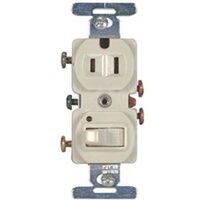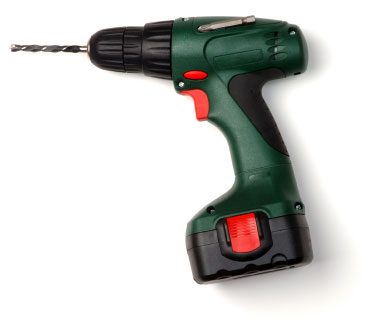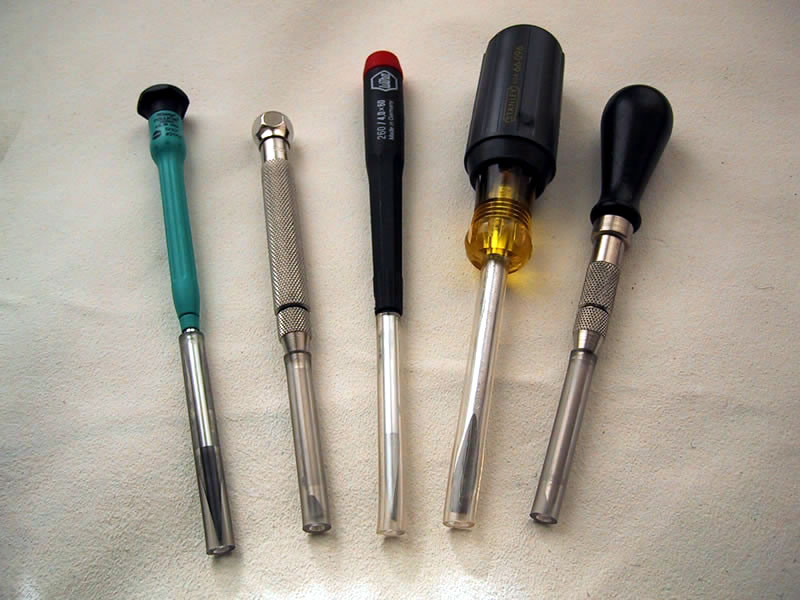 You can’t expect someone to bid on a job if you don’t specify exactly what you want done. It’s not enough to say, “Just add some receptacles and lights wherever you think we need them.” You have to specify where you want them, the types of fixtures you want, and even the styles of light bulbs. You don’t need detailed plans and specifications for everything. Adding a clothes-dryer circuit, for example, is pretty straightforward once you’ve designated where the laundry will be located. Details increase as the scope of the job increases. Installing a new service panel might mean a different location than an existing box. (This obviously is true when an old fuse box located off a back porch is replaced.) A complete update of your existing system, including running all new wire, would have to be detailed, especially when it comes to fixtures and their locations. The following list outlines a very basic plan:
You can’t expect someone to bid on a job if you don’t specify exactly what you want done. It’s not enough to say, “Just add some receptacles and lights wherever you think we need them.” You have to specify where you want them, the types of fixtures you want, and even the styles of light bulbs. You don’t need detailed plans and specifications for everything. Adding a clothes-dryer circuit, for example, is pretty straightforward once you’ve designated where the laundry will be located. Details increase as the scope of the job increases. Installing a new service panel might mean a different location than an existing box. (This obviously is true when an old fuse box located off a back porch is replaced.) A complete update of your existing system, including running all new wire, would have to be detailed, especially when it comes to fixtures and their locations. The following list outlines a very basic plan:
Sample House Plan
Main service: 200-amp Square D QO service panel
Location: NE corner of basement Existing fuse box will serve as a junction box for any existing circuits to be retained. The door will be screwed shut. New circuits to be added: Washing machine, dryer
Kitchen: Add two 20-amp small-appliance circuits with GFCIs, white Leviton receptacles, and cover plates. Install nine recessed cans (white trim) with dimmer switch (white) and two 18-inch fluorescent fixtures over counters. Run outlet for range and separate circuits for microwave, refrigerator, and disposer.
Lighting: Add sufficient 15-amp circuits to bring bedrooms, living and dining room, and hallway up to code for receptacles (six-foot rule).
Office: Run dedicated 15-amp computer circuit.
Master bathroom: Run GFCI. Install six-light fixture over mirror and recessed can over toilet (white trim). Install Nutone QT-200 fan.
First-floor bath: Run GFCI. Install four-light fixture over mirror. Install Nutone QT-100 fan.
Living room: Install four wall sconces and one recessed can over fireplace.
Dining: Use existing chandelier. Check wiring for safety.
Bedroom hallway: Use existing fixture and check wiring. Use existing bedroom ceiling lights and check wiring.
Basement: Run 20-amp circuit for workshop. Install four-foot fluorescent fixtures. Install six ceramic light fixtures in basement ceiling, locations to be marked.
Garage: Run GFCI and one light over each car bay. Run wiring for two garagedoor openers (to be installed by others).
Front porch: Install new porch light (Nautilus style). Install GFCI for outdoor use.
Rear porch: Use existing light and check wiring. Install GFCI for outdoor use. Contractor will supply all labor and materials and will remove any refuse from job site. Job will be kept broom-clean daily. Billing will be done in two installments with a 10-percent down payment to be applied toward materials.












 We use them every day, but we don’t think about them much. This is a good indication of the reliability of switches and receptacles. A bathroom light switch, for example, might be clicked on and off 10 times a day (depending on the size of your family). That’s a few thousand clicks each year, and the switch keeps going and going. If only our computers and operating systems were that reliable. A switch controls the flow of electricity between a source and an end device such as a light fixture. In a standard modern light switch, a metal arm inside the switch connects the two screw terminals to which the black, or hot, wires are connected. In the “Off” position, this arm moves out of the way and cuts off the flow of electricity along the conductors.
We use them every day, but we don’t think about them much. This is a good indication of the reliability of switches and receptacles. A bathroom light switch, for example, might be clicked on and off 10 times a day (depending on the size of your family). That’s a few thousand clicks each year, and the switch keeps going and going. If only our computers and operating systems were that reliable. A switch controls the flow of electricity between a source and an end device such as a light fixture. In a standard modern light switch, a metal arm inside the switch connects the two screw terminals to which the black, or hot, wires are connected. In the “Off” position, this arm moves out of the way and cuts off the flow of electricity along the conductors.

 A change order is a modification to a contract. It can be initiated by either you or your contractor, but it must be agreed to by both. You might decide to add more lights, for example, or a different type of fixture. Your electrician might run across unforeseen problems such as an existing circuit that must be replaced (when you assumed it could still be used). A change order usually means an increase in the price of the job, but this is not always the case. You might decide to eliminate some fixtures or to go for less-expensive ones, thus lowering your overall cost. The best change order, ideally, is no change order. Change orders can delay a job and might cause your electrician to have to undo work completed under your original specifications to accommodate the requested change. No plan is perfect. Remodeling is a fluid experience. As it progresses, you might see things you did not see during the planning stages. A skylight in the bedroom might become more desirable than the track lighting that just went in this morning. Don’t laugh, I had a client with more money than sense who did just that. Out came the new drywall and lights; in went new skylights and windows into newly finished rooms. At least he kept the carpenters employed and happy.
A change order is a modification to a contract. It can be initiated by either you or your contractor, but it must be agreed to by both. You might decide to add more lights, for example, or a different type of fixture. Your electrician might run across unforeseen problems such as an existing circuit that must be replaced (when you assumed it could still be used). A change order usually means an increase in the price of the job, but this is not always the case. You might decide to eliminate some fixtures or to go for less-expensive ones, thus lowering your overall cost. The best change order, ideally, is no change order. Change orders can delay a job and might cause your electrician to have to undo work completed under your original specifications to accommodate the requested change. No plan is perfect. Remodeling is a fluid experience. As it progresses, you might see things you did not see during the planning stages. A skylight in the bedroom might become more desirable than the track lighting that just went in this morning. Don’t laugh, I had a client with more money than sense who did just that. Out came the new drywall and lights; in went new skylights and windows into newly finished rooms. At least he kept the carpenters employed and happy.




 You can’t expect someone to bid on a job if you don’t specify exactly what you want done. It’s not enough to say, “Just add some receptacles and lights wherever you think we need them.” You have to specify where you want them, the types of fixtures you want, and even the styles of light bulbs. You don’t need detailed plans and specifications for everything. Adding a clothes-dryer circuit, for example, is pretty straightforward once you’ve designated where the laundry will be located.
You can’t expect someone to bid on a job if you don’t specify exactly what you want done. It’s not enough to say, “Just add some receptacles and lights wherever you think we need them.” You have to specify where you want them, the types of fixtures you want, and even the styles of light bulbs. You don’t need detailed plans and specifications for everything. Adding a clothes-dryer circuit, for example, is pretty straightforward once you’ve designated where the laundry will be located.


 Few homeowners do all the necessary electrical work on an old house. Upgrading a service, tying into old circuits, and rewiring existing ceiling lights can be intimidating tasks. Even if you choose to do more limited electrical work and hire the rest out, a good working knowledge of electricity and your home’s electrical system will enable you to discuss the job intelligently with your electrician and to compare bids more critically.
Few homeowners do all the necessary electrical work on an old house. Upgrading a service, tying into old circuits, and rewiring existing ceiling lights can be intimidating tasks. Even if you choose to do more limited electrical work and hire the rest out, a good working knowledge of electricity and your home’s electrical system will enable you to discuss the job intelligently with your electrician and to compare bids more critically.
 If you must wade, here are some considerations before you purchase:
If you must wade, here are some considerations before you purchase: If you search the Web for surge suppressors or go into a computer store, you’ll be surprised at how many manufacturers have the absolutely best product available. They can’t even agree on the best criteria to judge suppressors. What’s a consumer to do? Simple: Pick the suppressor with the best warranty. Such a warranty will guarantee the following:
If you search the Web for surge suppressors or go into a computer store, you’ll be surprised at how many manufacturers have the absolutely best product available. They can’t even agree on the best criteria to judge suppressors. What’s a consumer to do? Simple: Pick the suppressor with the best warranty. Such a warranty will guarantee the following:
 Extension cords come with warnings and usage guidelines just like every other consumer product. Some of the best advice comes from fire departments and the Consumer Product Safety Council, both of which have experience with the injuries and destruction caused by misuse of extension cords and power strips. Here’s a list of extension cord do’s and don’ts:
Extension cords come with warnings and usage guidelines just like every other consumer product. Some of the best advice comes from fire departments and the Consumer Product Safety Council, both of which have experience with the injuries and destruction caused by misuse of extension cords and power strips. Here’s a list of extension cord do’s and don’ts:


 Think of an extension cord as a portable, impermanent form of wiring. It’s subject to the same laws and limitations as any other electrical conductor, which means it can be overloaded, it can short out, and its insulation can melt. On top of that, they’re easy to trip over when they’re left lying around a work site. Extension cords are handy and necessary, but they need to be used carefully and inspected before each job. According to the Consumer Product Safety Commission
Think of an extension cord as a portable, impermanent form of wiring. It’s subject to the same laws and limitations as any other electrical conductor, which means it can be overloaded, it can short out, and its insulation can melt. On top of that, they’re easy to trip over when they’re left lying around a work site. Extension cords are handy and necessary, but they need to be used carefully and inspected before each job. According to the Consumer Product Safety Commission





 You’ll already be familiar with some of these tools; others are limited to the electrical trade. These tools will cut, strip, and twist wires and will secure electrical boxes, light fixtures, switches, and receptacles. You could strip away insulation with a pocketknife and cut wire by bending it back and forth until it breaks, but you’ll end up with sloppy results and damaged cable. Good cutting and stripping tools prevent wires and insulation from getting nicked and enable you to work with wire in tight areas such as small boxes. The following tables list the basic hand tools for electrical work and some more specialized tools, too.
You’ll already be familiar with some of these tools; others are limited to the electrical trade. These tools will cut, strip, and twist wires and will secure electrical boxes, light fixtures, switches, and receptacles. You could strip away insulation with a pocketknife and cut wire by bending it back and forth until it breaks, but you’ll end up with sloppy results and damaged cable. Good cutting and stripping tools prevent wires and insulation from getting nicked and enable you to work with wire in tight areas such as small boxes. The following tables list the basic hand tools for electrical work and some more specialized tools, too.



